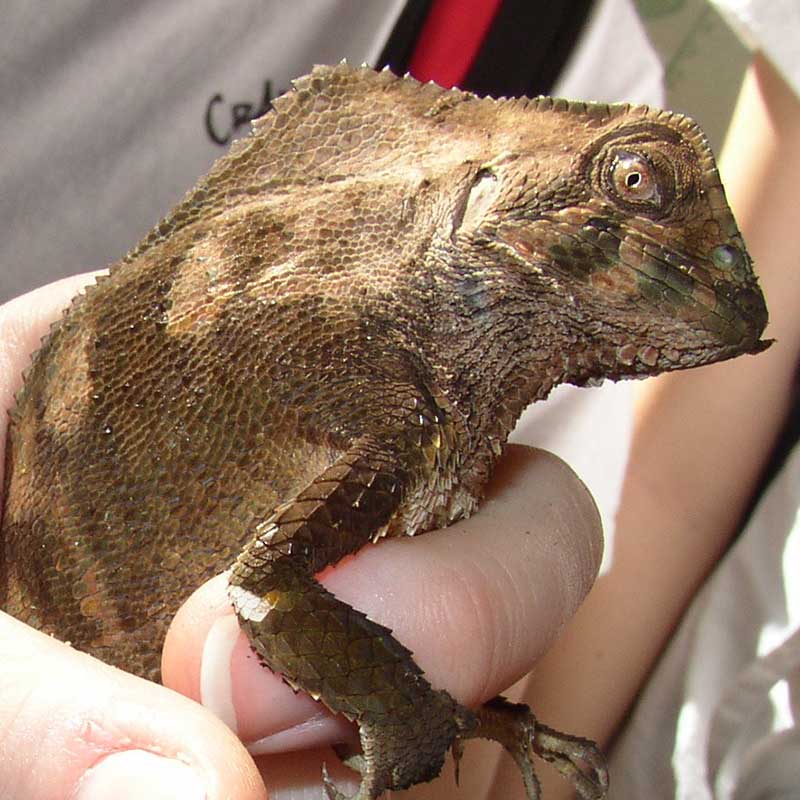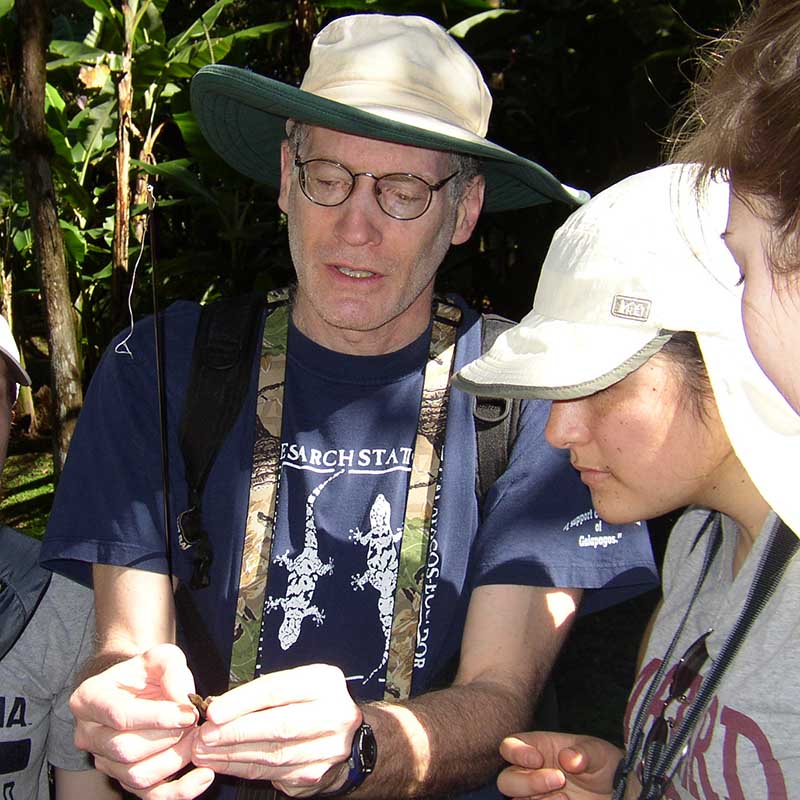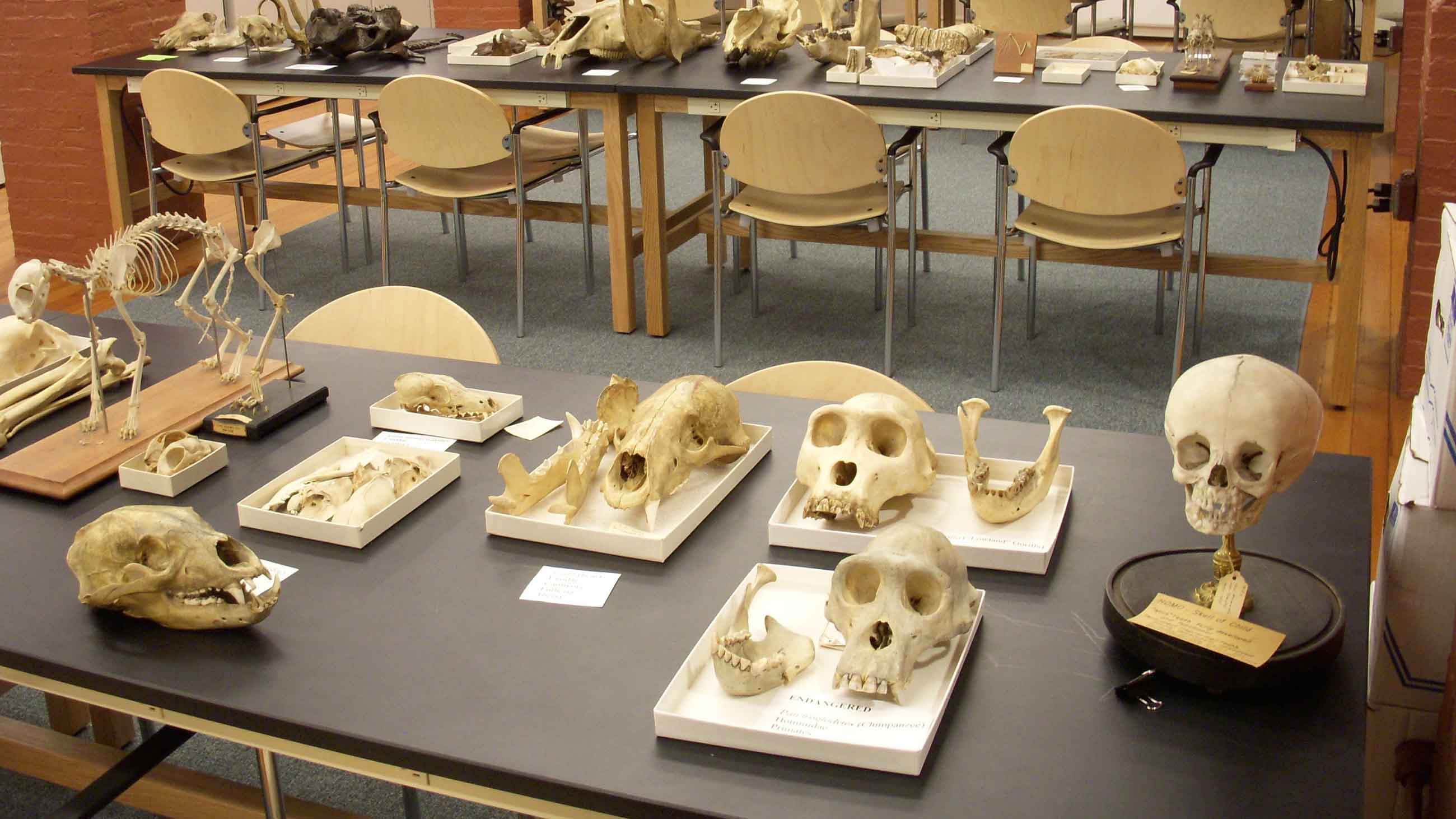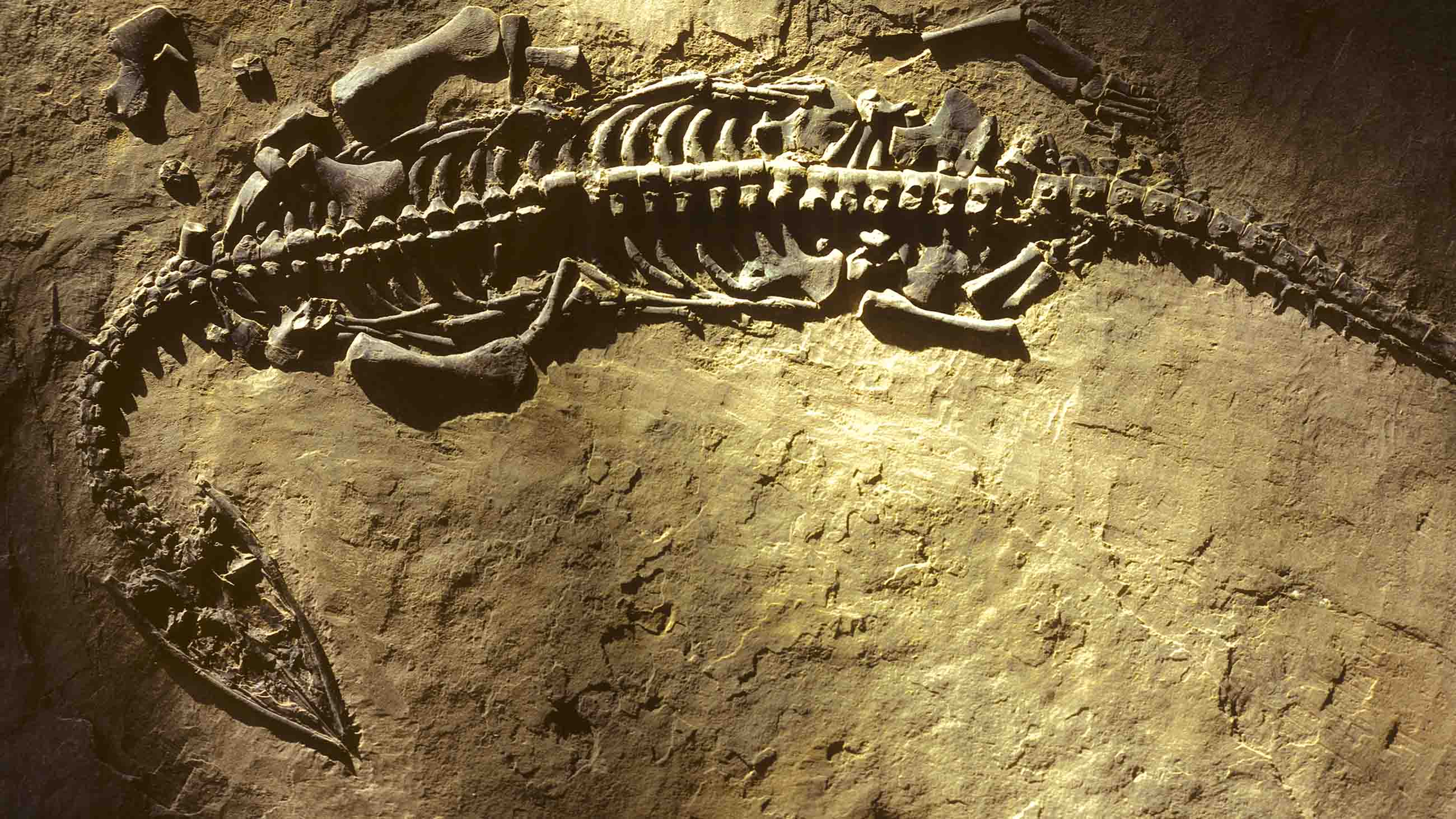Return of the ’Ologies: Natural History Makes a Comeback on Campus
Natural history has been on the decline in American college and university curricula for decades, taking a back seat to high-tech-driven fields like molecular biology, genetics, and biotechnology.
“Many universities have lost or no longer teach natural history,” said Rauri Bowie, an ornithologist and professor in the department of integrative biology at the University of California, Berkeley. “In the 1960s and 70s, biology went through a reductionist revolution. Biochemistry and molecular biology were emphasized because of the discovery of the structure of DNA.” Indeed, one of the discoverers — the molecular biologist James Watson — once derided natural history as “stamp collecting.”
But now, natural history is starting to re-emerge as an important component of the biology curriculum — with Harvard (where Watson once taught) and Berkeley leading the way. In light of such daunting environmental issues as climate change and the continuing loss of biodiversity, the change can’t come soon enough.
“There’s more now than there was 15 years ago,” James Hanken, an evolutionary biologist who is director of the Harvard Museum of Comparative Zoology, told me. “I have been encouraging faculty to teach the ‘’ologies’” — including entomology, ichthyology, mammalogy, ornithology, and vertebrate paleontology.
Jonathan Losos, a professor in Harvard’s department of organismic and evolutionary biology, said that as recently as the 1990s there were few natural history courses to be found in the curriculum, thanks to “the chauvinism of molecular biology.”
“Natural history is thought of as old-fashioned,” he said — “not sexy, high-tech science.” And “it doesn’t fit into the pre-med curriculum that schools seem to feel they have to cater to.”
But new faculty wanted to teach those “old-fashioned” courses, Losos went on, and students clamored for them. He and Hanken revived the herpetology course in 2008.


The ’ologies are not just for biology majors. The herpetology course includes a weeklong field trip to Costa Rica during spring break, which doesn’t hurt in attracting students with other majors. (As an auditor in Losos’s course, I took the Costa Rica trip in 2008.)
“Students see the real deal in its natural setting,” said Hanken. “Some people have never been off pavement, so it’s good to get them out into the mud and the rain and get something they can’t get from books. Field trips are a great learning tool.”
Julius Bright Ross, who received his bachelor’s degree in integrative biology from Harvard this year and is now pursuing a Ph.D. in zoology at Oxford, said the Costa Rica trip was the best academic experience he had in college.
”It’s one thing to talk about these organisms in class or even look at specimens,” he said. “It’s entirely another to see them in the wild, interacting with their environment.”
Asked if there had been any pushback about bringing natural history courses back into the curriculum at Harvard, Hanken replied, “None at all. Our natural history-focused courses have proven to be extremely popular among undergraduates. Enrollments are healthy and student evaluations are strong — which deans, department chairs, and other administrators like to see.”
It helps that Harvard has world-class collections like the Museum of Comparative Zoology and the Harvard University Herbaria. As Hanken noted in an email, “The natural history-focused courses typically make use of museum/herbarium specimens as part of ‘object-based teaching,’ which the administrators like to see because it helps justify sustaining the collections, which can be expensive to maintain and take up a lot of space.”
Likewise, Berkeley, where both Hanken and Losos got their doctorates, has its own eminent Museum of Vertebrate Zoology; this year the university celebrated the 104th anniversary of its popular course Natural History of the Vertebrates. Hanken said he and several colleagues who work with vertebrates at Harvard either took the course as undergraduates or were associated with it as graduate assistants.
Michael Nachman, director of the Museum of Vertebrate Zoology at Berkeley, says natural history is important from a scientific perspective because there are questions the higher-tech disciplines are ill suited to address: how species interact, how climate change or habitat destruction will affect biodiversity, and how organisms adapt and diversify. And perhaps most important, natural history produces a deep appreciation of the natural world that can change people’s lives.
Emily Taylor, a biology professor at Cal Poly in San Luis Obispo, California, took the Berkeley course in the 1990s from Harry Greene, a herpetologist who is now an emeritus professor at Cornell. She was an English major at the time, taking science classes in hopes of becoming a physician or veterinarian. That all changed on a natural history field trip.
“I was not interested in reptiles before the class,” she told me. Then “Harry pulled a king snake out from under a rock and put it into my hands.” She added, “It was magical.” She now teaches herpetology at Cal Poly, and the main focus of her course is natural history.
A colleague, John Perrine, said there seems to be a resurgence in natural history as Americans grow more passionate about conservation. More people are being exposed to natural history through the media and wildlife shows.
Lauren O’Connell, a biology professor at Stanford who studies poison dart frogs, says the university puts little emphasis on natural history, but she’s hoping to change that.
“My department recognizes there is a lack of organismal biology courses and encouraged me to develop courses to fill that need,” she said. “I want to teach herpetology at Stanford because I can teach about physiology, evolution, ecology, and animal behavior within a single course that is naturally interactive with museum specimens and field trips.”
Losos, who will be leaving Harvard at the end of 2017 to lead a conservation collaborative at Washington University in St. Louis, said that ultimately it’s important to teach natural history because it’s the basis of everything we know about the natural world.
“You can’t understand biodiversity without a grounding in natural history,” he said. “You need to know the place of an organism in the natural world to understand evolution.”
And natural history can serve as an inspiration for new ideas in human technology. “Most theoretical ideas spring from observations of the natural world,” Losos said. “You observe things, then wonder why they are as they are.”
Consider the gecko, whose gravity-defying climbing prowess is leading to the development of new adhesive products. As Losos noted, “This stems from the observations of a graduate student looking at a gecko running upside down on a ceiling and wondering how it does it.”

Martha Muñoz, an assistant professor of biological sciences at Virginia Tech who received her Ph.D. in Losos’s lab at Harvard in 2014, says natural history is the key way to engage students with their “wonder reflex” — helping them connect more personally with nature and build observations that feed into their hypotheses.
“Humans are natural-born biologists, but a biology curriculum that stamps out natural history and basic observation can rapidly lose its audience,” she said. “For my part, natural history will always remain a part of my research and a key aspect of the courses that I teach.”
Hanken says it’s important for all students, regardless of their major, to have an appreciation for the natural world, if only to appreciate how much the survival of human society depends on it.
“This is especially important at this time,” he wrote in an email, “when human-caused climate change, pollution, habitat destruction, etc., are threatening the very life support systems — e.g., agriculture, freshwater — on which we depend.”
Don Lyman is a freelance journalist, biologist, and health care professional. His articles have appeared in The Boston Globe, The Christian Science Monitor, Southwest Airlines Magazine, earthisland.org and elsewhere, and audio segments on “Living on Earth,” on public radio.











Comments are automatically closed one year after article publication. Archived comments are below.
Glad to see Berkeley and Harvard finally caught up. A few biology departments recognized 15 or more years ago that many of the most interesting questions in biology were at the interface of the organism and how it works at the cell and molecular levels. These departments deliberately brought together faculty that cut across levels of inquiry (field to gene expression) that sparked fruitful collaborations in tackling fundamental questions. For example, not just describing how populations of a species in different environments are diverging, but then looking at the changes in gene expression that are driving those changes. Rather than splitting the environmental/ evolution biologists away from the cell and molecular biologists, as many universities did in the 90’s, these departments recognized many of the most interesting cell and molecular questions are cast in the context of the organism and vice versa. One example of that has been the incredible insights driven by sequencing thousands of genomes both from within a given species and between them.
It’s exciting to be witnessing the resurgence of natural history. Several years ago I participated in a series of workshops of the Natural History Initiative, titled “Natural History: From Decline to Rebirth,” associated with the National Center for Ecological Analysis and Synthesis. (A workshop report is available at http://rsbl.royalsocietypublishing.org/content/early/2011/08/16/rsbl.2011.0777.) This work is continued by the Natural History Network (http://naturalhistorynetwork.org) and its associated journal. Thanks for spreading the word about natural history, Don!
This is a very welcome development. Ultimately research and teaching agendas are set by funders, and funders prefer laboratory science; first because it promises cash returns on investment, second because projects that work under controlled conditions can be planned as meticulously as the most rigid of bureaucrats requires, and third because it looks like real work. Whole organisms, especially wild ones are unsettlingly unpredictable to those who live in a world of Gannt charts, scheduled cash flows, and predicted outcomes.
The structure of DNA was discovered at the Cavendish – Rutherford’s old lab – about 15 years after his death. From people who knew him, and who taught me, he would have been fascinated by these advances, much of them dependent on crystallography and model-building to short-cut across the difficult bits.
Physics makes use of the fact that all the bits are identical … every electron in the universe is the same and obeys the same rules. In contrast every bacterium is unique and us, who moved into the -ologies, are still striving to formulate the equivalent of the laws of thermodynamics … and would they be useful anyway?
I believe the quotation about stamp collecting is from Lord Rutherford, who was not disdainful of natural history, merely any field outside of physics that called itself science. According to him there was physics and the rest was stamp collecting. Rutherford didn’t live to see DNA’s structure discovered by Watson, but it’s likely he would have lumped Watson’s molecular biology into stamp collecting, too.
These “ologies” are NOT easy disciplines! People need some basic knowledge here in order to vote intelligently.